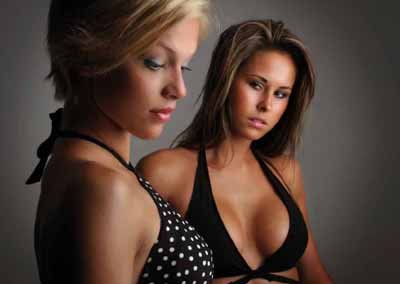

articles/Fashion/modelbehaviour-page2
Model Behaviour - part 2 of 1 2 3 4 5
Published 01/06/2009

By Kevin Casha
Preparing the Session
After the initial introduction between model and photographer, a basic idea of what both want from the session has to be set out and agreed. A brief, informal encounter between the two parties is ideal as it will break the ice and, most importantly, map out the session in as much detail as possible.
For a general portfolio, portrait, full-length, indoor, location and possibly a few black and white and/or sepia photos are needed. The more varied the portfolio, the better chance one has of obtaining jobs in advertising, fashion shows, etc.
If the model has a good figure, swimwear or tasteful lingerie photos should also be included as most of your model's clients will require full-length figure studies before assigning a model. Photos showing the model with a simple 'up-style' as well as loose, natural hair also shows versatility.
Discuss locations with the model and what the mood and scope of the images is planned to be. Make provisions to totally postpone the shoot or alternatively move to another more sheltered location if the weather is not what you bargained for.
Hair, Make-up, Accessories, Props
To get the utmost out of a photo session, the photographer and model should prepare thoroughly. Clothes have to be chosen carefully and should be suited to the model - it is no use wearing the latest fashions when these do not complement the model's figure or looks.
Make-up is also a crucial element. A good make-up artist should be engaged. She can be compensated with pictures from the shoot for her own portfolio. It can also prove beneficial to have the make-up artist present for the session - it serves as further re-assurance for an inexperienced model and she will also be invaluable for retouching and changing the model's make-up for different looks.
Props (such as earrings, jewellery, hats, etc) should normally be kept to a minimum unless they are the main focus of the shoot. These usually tend to distract from the main subject (ie the model). Scarves and belts also come in handy during a photo session whilst a basic make-up kit is essential. Try to avoid multi-coloured or gaudy-patterned outfits, wording and logos on the clothes.
Hair, especially when shooting outdoors, should be kept as natural as possible - keep away from elaborate hairstyles - they will not look too good after a couple of hours in sunny, windy, rainy conditions! It is also important before any session, particularly where parts of the body are to be evident, to depilate all unwanted hair. This is definitely not very attractive. Also, if the model is doing swimwear or nude photography, make her aware that the wearing of tight clothing will mark the skin and take some hours to clear.
Legal Aspects
It is normal practice that before any photos are taken, the model(s) should first sign a 'Model Release Form' or a contract. This release will state clearly what the photographer's and model's responsibilities will be and also where and how the photos in question will be used. This agreement serves to protect both the model and the photographer.
Model releases can differ greatly so it is always wise that they are read carefully by both parties before signing. Do not be afraid to discuss, add or delete clauses which you think are needed - naturally, this has to be done before the photo session. Make sure you adapt the model release for your own specific needs.
Model releases should also incorporate details of any payment a model may be receiving from the client or from the photographer for her services.
With data protection and copyright laws getting tougher and stricter, it is wise to have this release handy for all your photo shoots. As matters stand, if the release is not signed, the photographer will have the copyright of the images but will not be able to use them anywhere without the written consent of the model.
If the session is commissioned, another important factor which must be taken into consideration is pricing your work. Usually a photographer charges an assignment fee and a further cost-per-print ordered. The original images are legally the property of the photographer unless previously agreed otherwise. Still, he cannot use them for anything without the model's permission.
Many photographers are now charging for the session and giving the images on CD to the client. If you go for this, make sure that editing is included in your price.
Do not give out unedited images - your photographs are your advertisements
- Model Behaviour page 1
- Model Behaviour page 2
- Model Behaviour page 3
- Model Behaviour page 4
- Model Behaviour page 5
1st Published 01/06/2009
last update 20/07/2022 13:53:42
There are 22 days to get ready for The Society of Photographers Convention and Trade Show at The Novotel London West, Hammersmith ...
which starts on Wednesday 14th January 2026





